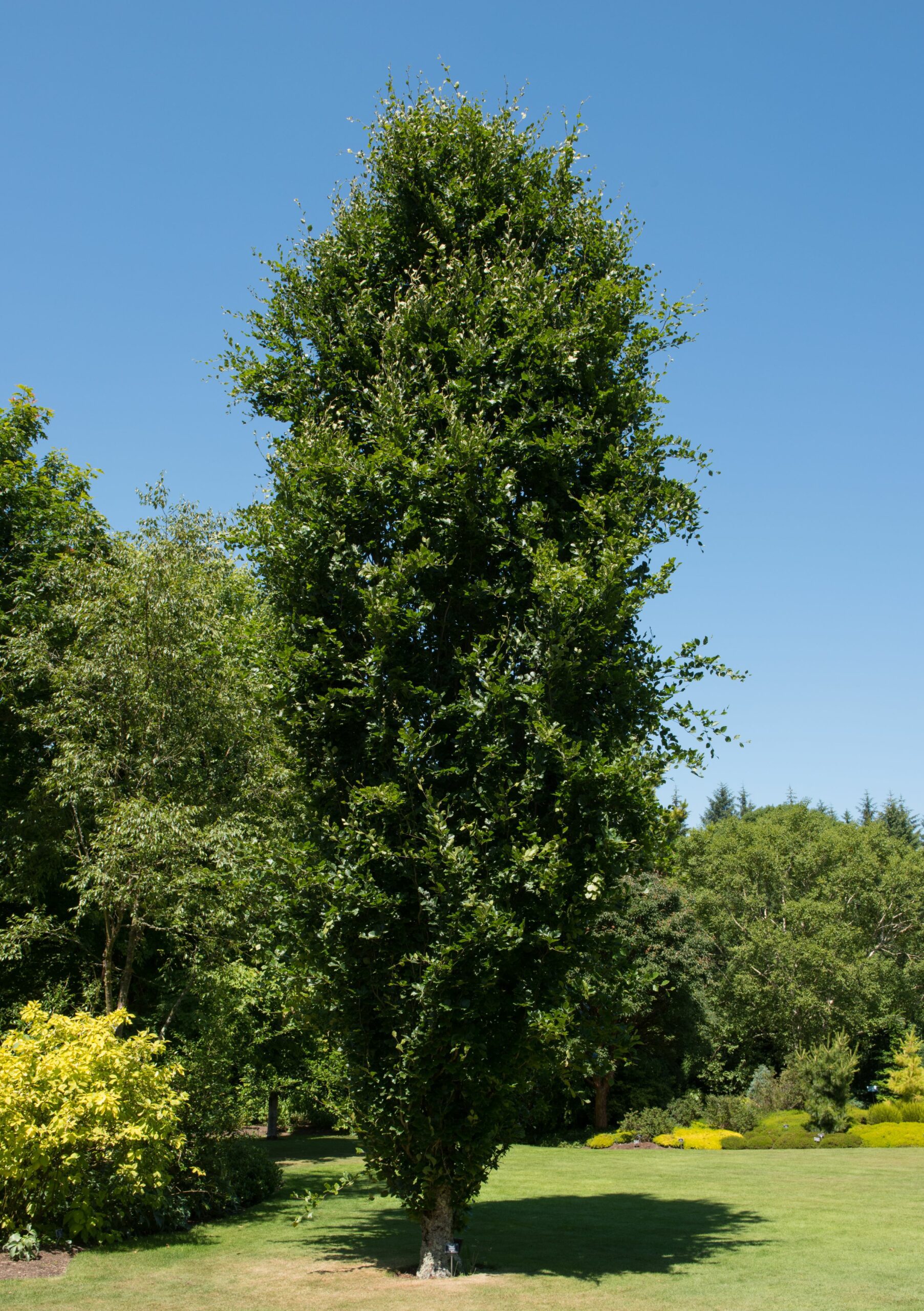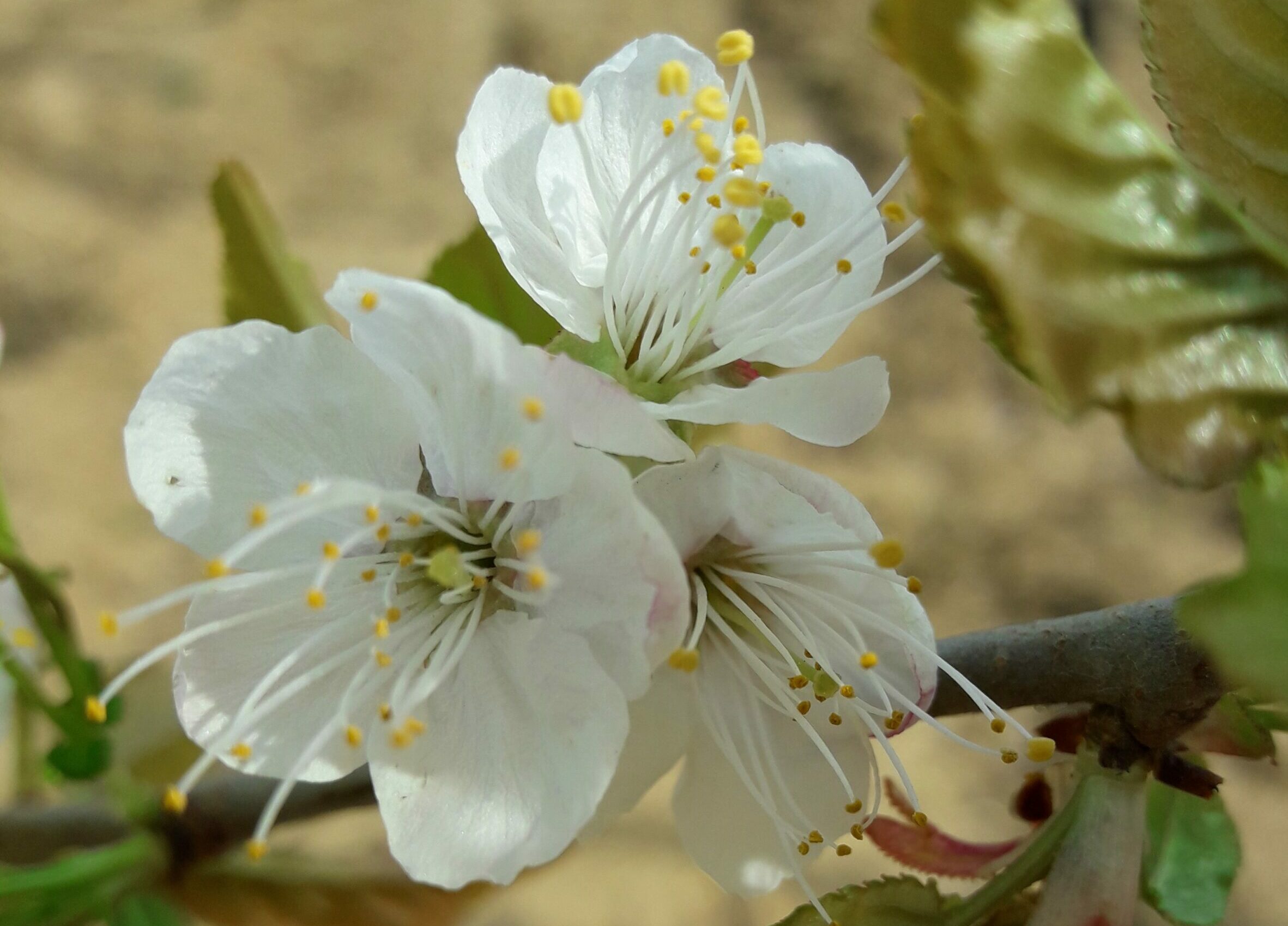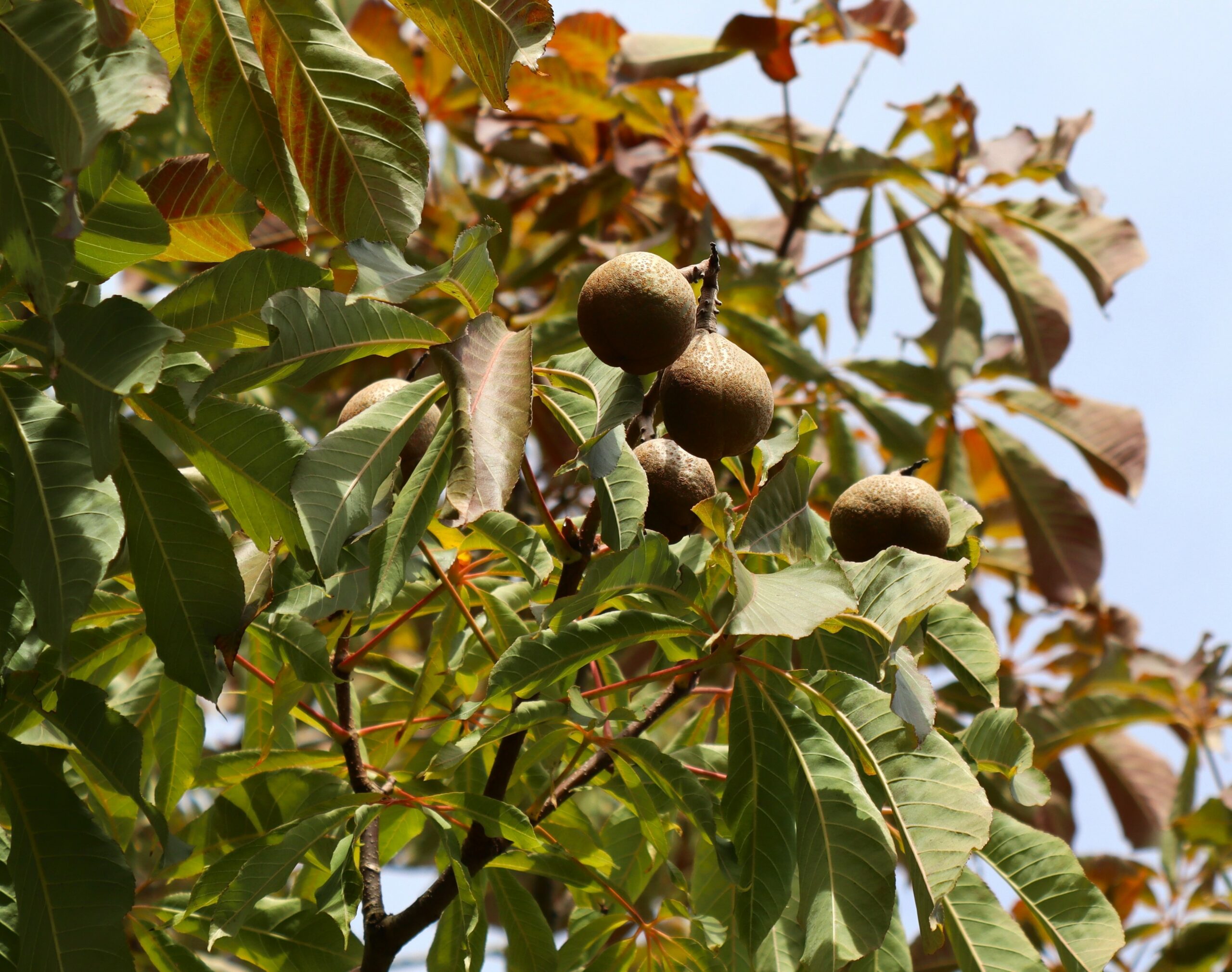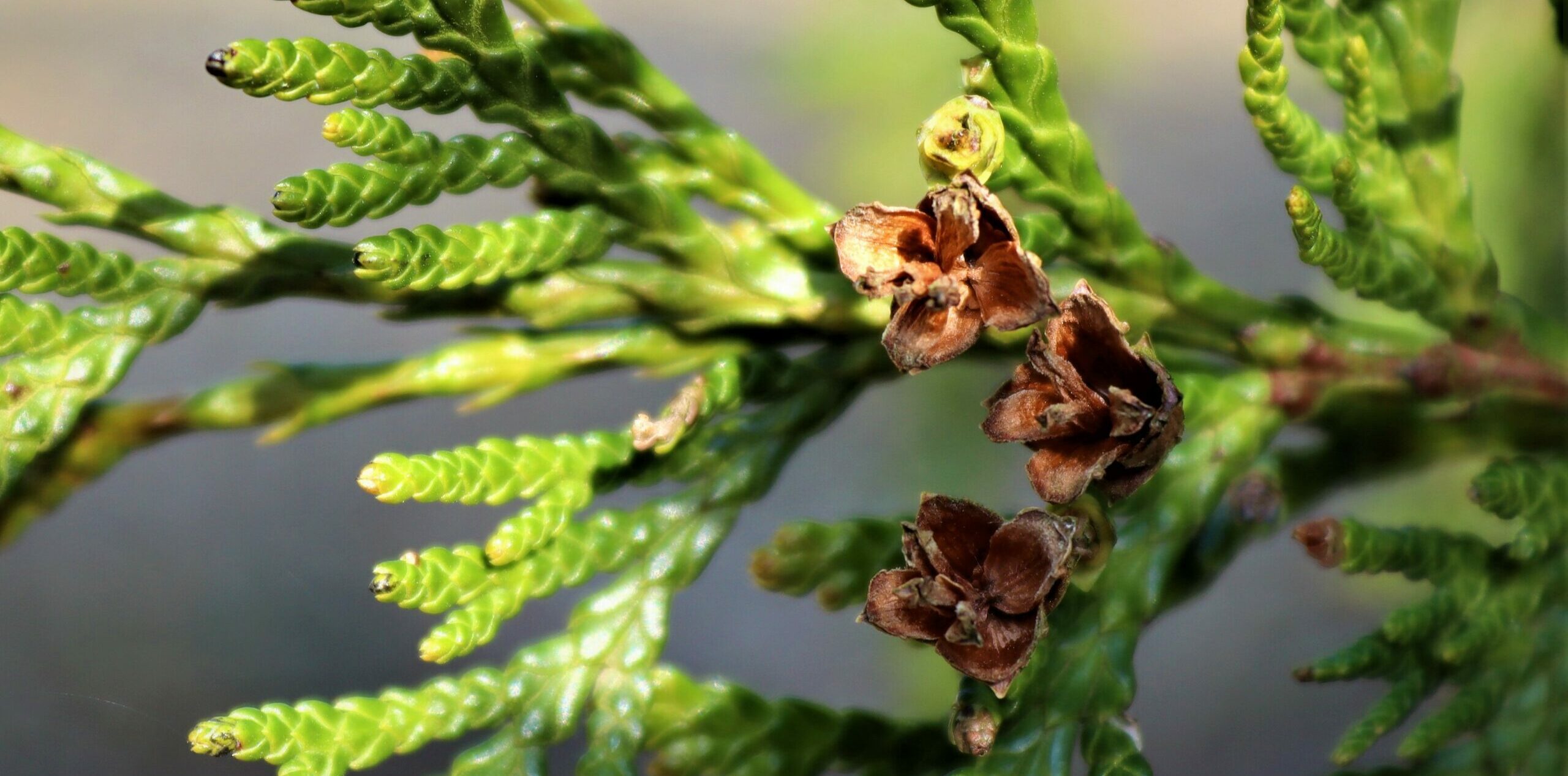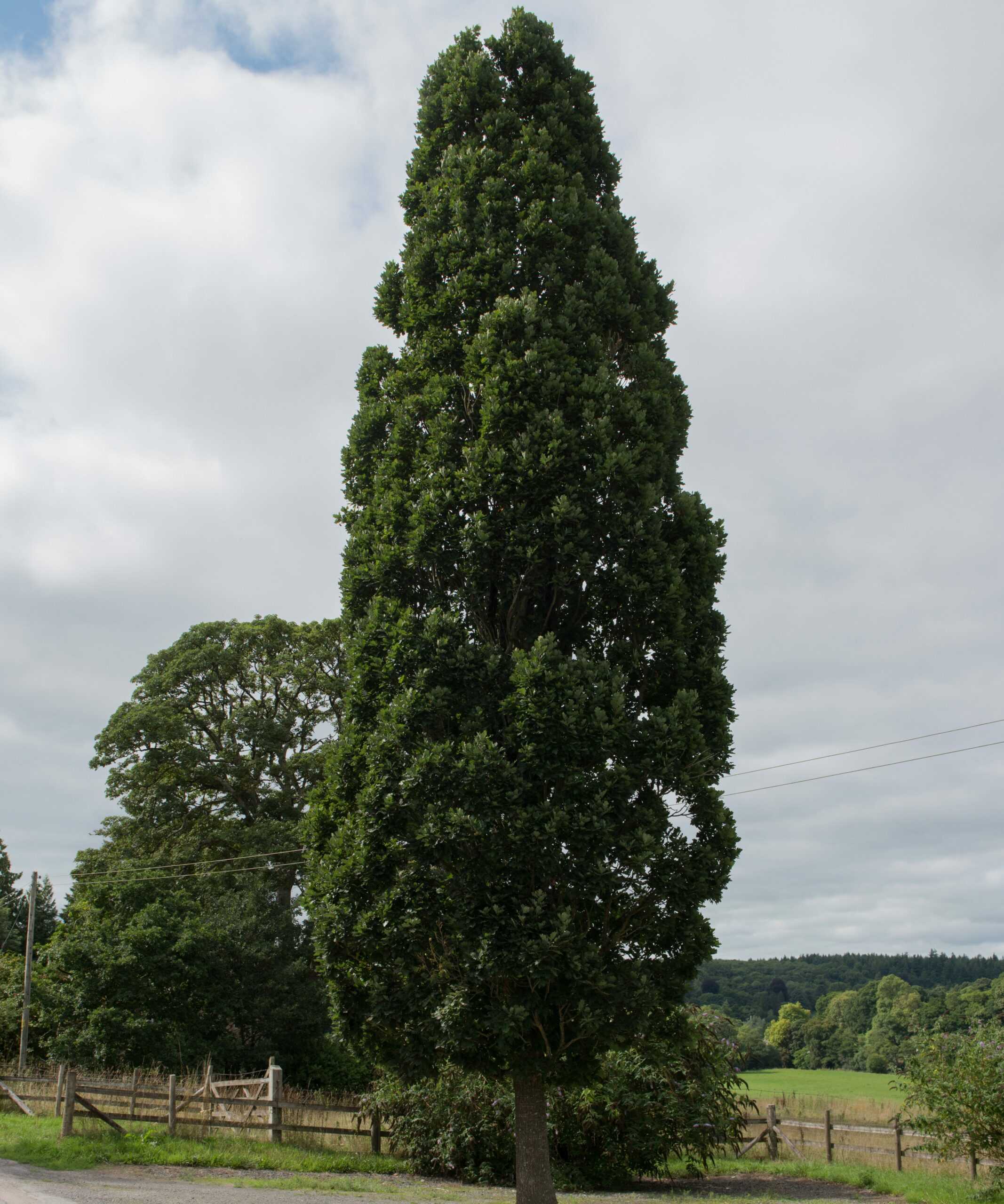Tree Information
Specialities
Tolerances
Wet Soil: Low
Dry Soil: Medium
Lime: Medium
This remarkable cultivar of our native beech boasts a distinctively slender form, originally spotted within the woodlands of the Dawyck estate in Peebleshire, Scotland. Recognising its unique beauty, the estates proprietors relocated this singular tree closer to the residence for enhanced enjoyment. Subsequently, Fredrick Balfour acquired the estate, and, being an avid arborist, he admired the trees exceptional form. He propagated cuttings from its youthful growth, disseminating these scions to prestigious gardens like Kew and Hermann A. Hesse tree nursery. It was at Hesse’s nursery that the Dawyck variant was first propagated and commercially introduced in 1912.
With a towering compact pyramidal canopy that can ascend beyond 20m, this tree commands attention while maintaining a restrained width, rarely ever exceeding 3m. This unique profile offers versatile applications, from shading narrow medians, to crafting captivating landscape compositions. The tree’s bark gleams with a silvery steel hue, presenting a smooth and flawless surface. This distinctive bark extends along its robust branches, contributing to its majestic and regal canopy appearance.
As spring arrives, the trees elongated buds open to green leaves that evolve into a vibrant lime hue. These feature pronounced veins and densely populate the canopy, creating a visually stunning display. As summer transitions into autumn, the foliage matures into rich browns and yellows, eventually drying to brown crinkled leaves that persist throughout winter.
Visit our Useful Resources for in-depth guides
Discover guides to help you with specifying your trees, caring for your trees and understanding the weights and dimensions of trees.
Useful ResourcesSize
Large
10m high x 3m wide after 25 years
Environment
Ideal for central reservations, avenues and design specimen planting.
Canopy
A tight pyramidal form of the Beech with ascending branches. Its tall canopy can reach 20m high, remaining at a maximum width of 3m. The branches tend to grow from the base up, displaying a symmetrical narrow form similar to a candles flame.
Foliage
Buds break in spring when green leaves unfold. These become a vibrant lime green with deep crinkle cut veins. As autumn arrives, the leaves bronze and become a russet brown and cling onto the tree throughout winter.
Bark
A silvery steel hue, presenting a smooth and flawless surface.
Resilience
Not demanding of soil type, it requires a free draining structure that does not waterlog. Its long columnar canopy and shallow roots are not suitable for overly exposed locations.
Available As:
Semi-Mature, Super Semi-Mature
Make an Enquiry
Enquire below and speak to one of our expert team. For trades only, for general public enquiries click here.
Find Trees For Your Project
View Our TreesSpeak to a Member of Our Sales Team
Make an Enquiry
